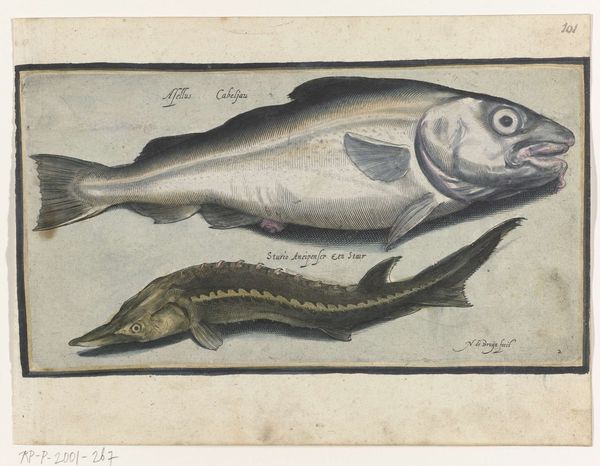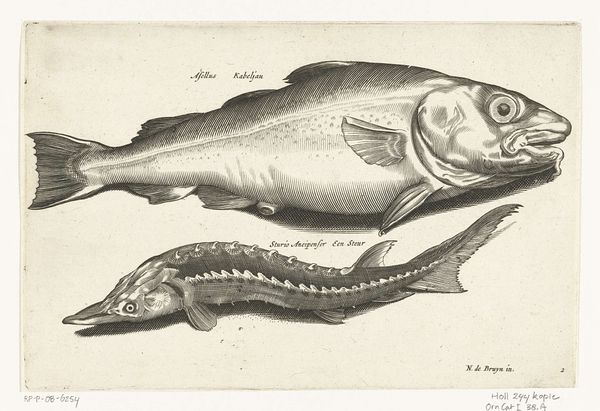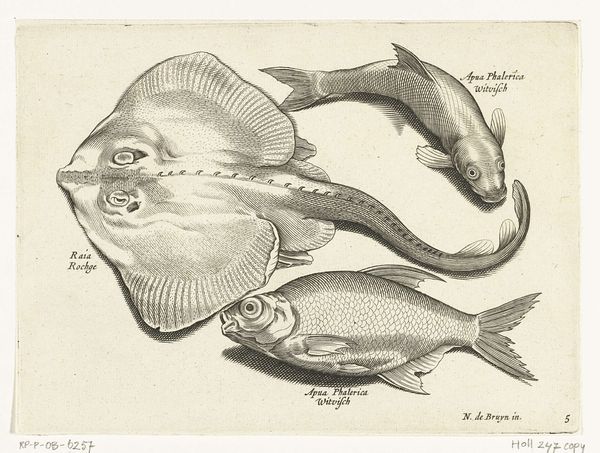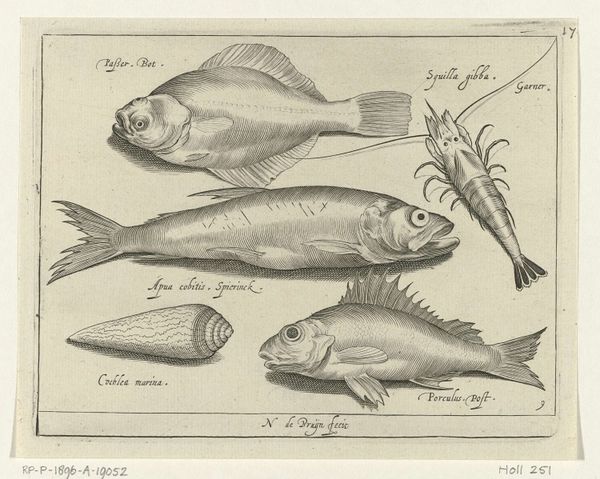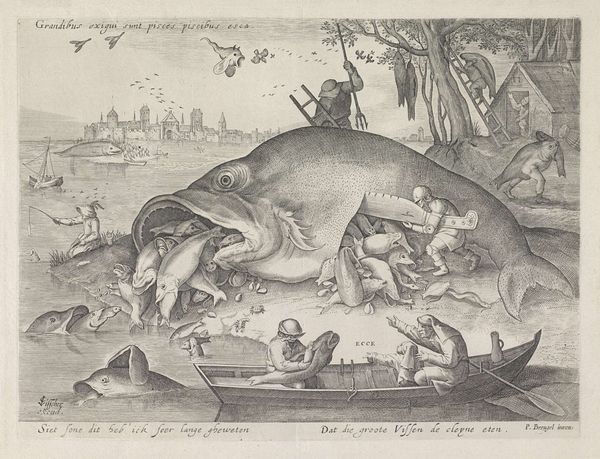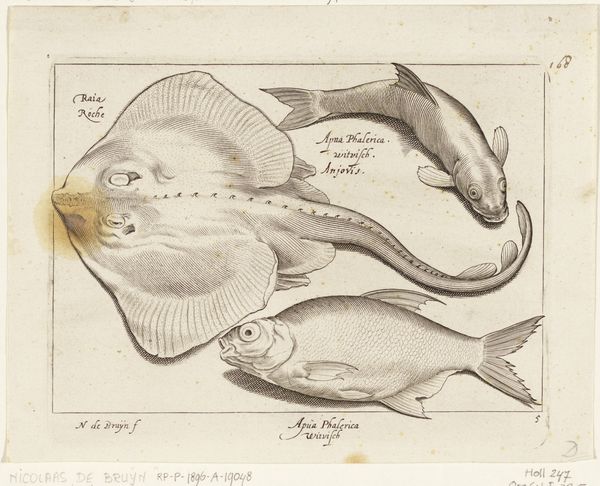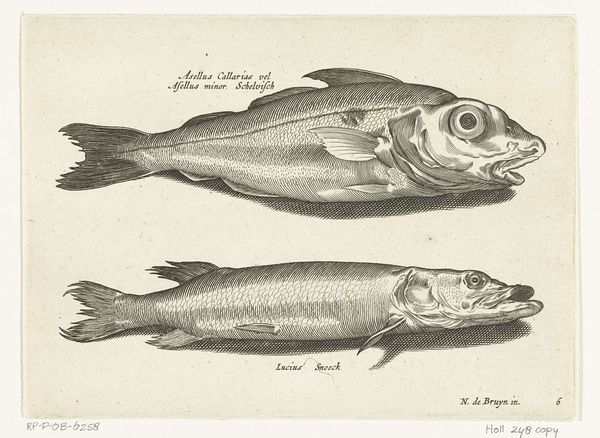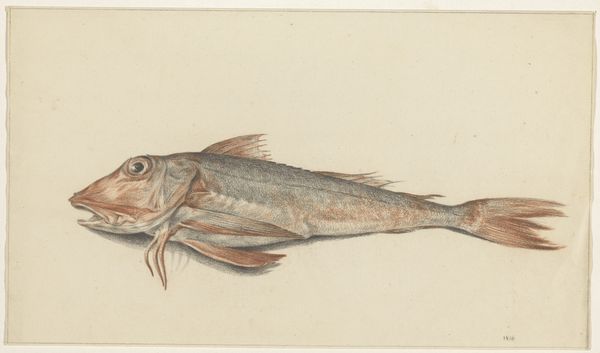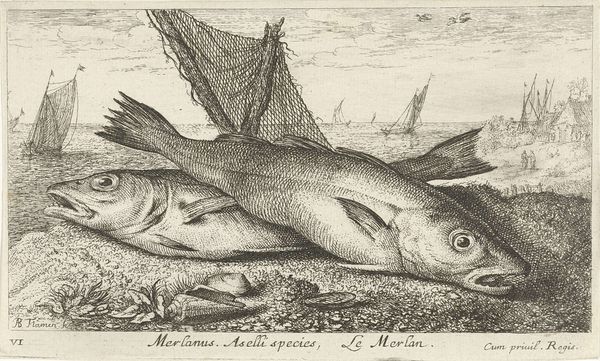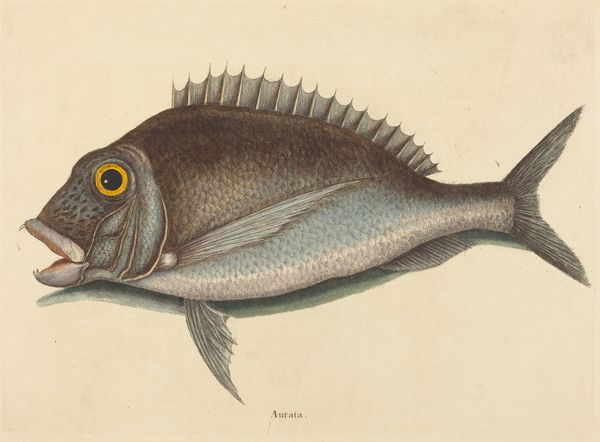
print, etching
#
dutch-golden-age
# print
#
etching
#
genre-painting
#
realism
Dimensions: 100 mm (height) x 171 mm (width) (bladmaal)
Editor: Here we have Albert Flamen's etching "Stavsild (Alausa)", dating roughly between 1620 and 1669. It presents two very realistically rendered fish in the foreground. Their open mouths give them a slightly mournful expression. What strikes you most about the composition of this piece? Curator: The linear precision employed to delineate the forms, especially the scaly texture of the fish, is certainly notable. Consider the strategic placement of the fish in relation to the horizon line. How does that compositional decision affect your reading of the image? Editor: I hadn't considered that specifically. It creates a clear division between the still life in the foreground and the implied activity in the background. Curator: Precisely. Observe how Flamen manipulates light and shadow within the etching itself, achieved through varying densities of lines. How do these tonal shifts model the forms and contribute to a sense of depth? Editor: I see, the darker areas emphasize the curve of the fish, giving them volume. The background uses lighter strokes, almost fading into the distance. Curator: Yes. This careful gradation enhances the verisimilitude of the scene. Also consider the deliberate selection of this everyday subject matter, elevated through skilled technique. What effect does such realism have on the viewer? Editor: It's captivating to see something so ordinary depicted with such care. I notice the tiny shells around the fish now. That attention to detail, and the realism, are quite striking. Curator: Indeed. It invites contemplation on the beauty inherent in the commonplace. Editor: It’s amazing how much can be discovered just by analyzing the formal elements. Curator: Indeed, a closer look at structure and form often reveals surprising layers of meaning.
Comments
No comments
Be the first to comment and join the conversation on the ultimate creative platform.

